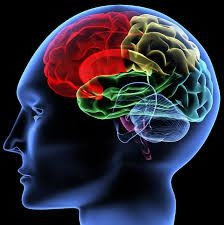Born to Connect
The Neurobiology of Attachment
We are wired for relationship!
Neuroscience provides us with hope and evidence to support parents who seek change in their parent/child relationship. Attachment theory is no stranger to many of us. According to this theory, each of us has a natural desire to bond with another human being like a parent or partner. In fact, some scientists think that this desire is wired into our neurobiology. Yes, that’s right! The need to feel connected is part of our genetic makeup. But how do other factors like child development, early trauma, relationship formation, stress and well-being play into all of this? I’m glad you asked. I will try to connect some of the pieces to the puzzle for you in this blog post.
Nature and nurture working together
Within the past ten years neuroscience has exploded in brain
imaging processes known as functional magnetic resonance
imaging (fMRI). Experts can now determine what parts of the
brain are stimulated when we feel angry, fearful, loving, or
sympathetic. Neuroscience helps us to better understand the
effects of early trauma and stress on child development.
Research has shown that as human beings we need both
nature and nurture to function successfully and develop
secure attachments.
The importance of early experiences
The attachment style (e.g., secure, anxious, avoidant, disorganized) that a child develops begins with the caregiving experience received in the first years of life. Secure attachments help children to form healthy adult relationships later in life. For over two decades, researchers have explored how childhood attachment impacts relationships and the neurobiology of the brain over time. One of the largest longitudinal studies on trauma known as Adverse Childhood Experiences (ACE) was completed by Center for Disease Control (CDC) and Kaiser. This study had over 17,000 participants that suffered from trauma and neglect. Research findings from the ACE study concluded that childhood abuse has an impact on physical health by increasing the odds of being diagnosed with a chronic illness as well as mental and/or psychiatric illnesses. Early trauma, especially related to caretakers, leads to a complexity of post-traumatic reactions.
According to Bruce Perry, an expert on childhood trauma and maltreatment on the developing brain, the impact of childhood trauma is so great because it occurs at critical periods when the brain is most rapidly developing and organizing. During the first 3 years of life brain development is at a rapid pace, creating neural pathways that allow more complex parts of the brain to exist. Studies have discovered that before the age of five up to 90% of the adult brain has been formed. Despite the vulnerability of the brain to early trauma, remarkable recovery is often possible with interventions.
How parent/child interactions shape the brain
Recent studies have shown that children who grow up with nurturing parents with regular physical touch experience normal brain development in the hippocampus and amygdala (i.e., part of the brain responsible for spatial learning, stress reactivity, memory consolidation and the processing of emotions). In contrast those children that grow up in poverty are at higher risk for having parents that use harsher parenting styles (i.e., lacking nurturance, physical touch). These children tend to have a smaller cortex (i.e., outer layer of the brain) with less activity in the temporal lobe resulting in poor social and emotional intelligence. Research has shown that parenting young children in a loving, caring way safeguards children from stress that leads to a decline in brain development.
Secure attachment increases the odds of children achieving positive outcomes in adversity, which in turn fosters resiliency by improving one’s cognitive emotional and social well-being. Subsequently, even if a child has a turbulent early start, his/her brain is so resilient, that if provided with love and nurturing (i.e., secure attachments) later in life it will change the composition of the brain and the brain can repair itself. Neuroplasticity (changes in neural pathways) and even neurogenesis (creating new neurons from cells) continues throughout life. Neurogenesis in the mature brain may be an important biological mechanism responsible for the brain’s natural ability to change following an injury. Secure and mutually supportive attachments are formed in parent and child relationships and also in partners in romantic relationships providing safety and minimizing the heightened arousal of cortisol (stress hormone) levels.
What health professionals understand
1. Positive experiences can help to change the structure of the child’s brain following a traumatic injury (maltreatment, physical and emotional abuse).
2. Neuroscience provides us with hope and evidence to support parents who seek change in their parent/child relationships.
3. Change can be facilitated in relationships through family therapy when therapists understand how the brain works and can promote new neural circuits.
For example, Susan Johnson initially suggests individual therapy to allow the trauma survivor space to address the trauma and its effects. She will then engage her patient in couple therapy to de-escalate relationship distress and create a secure base for both partners using the relationship as a part of the healing process.
Another example is Mona Fishbane uses couple therapy to provide concrete skills such as mindfulness, meditation, and emotion regulation techniques (rethinking angry emotion and seeing situation from a different perspective).
In therapy when I recognize that a couple has gone into fight and flight mode and they are no longer able to regulate their emotions or control their anger I tend to calmly slow them down, validate what they are saying and recommend that we need to take a moment to take three deep breaths. As a Christian counselor I also use prayer to alleviate some of their tension and help them to calm down without minimizing their pain or frustration.
How you can use this knowledge
1. You can begin to transform their own lives and relationships through psychotherapy.
2. Remember that when parents use a nurturing approach instead of a harsher approach with young children, they protect children from stress that leads to poor brain development.
3. Loving children/spouses is the key to changing insecure attachments into secure attachments and building secure, healthy relationships.
If your child did not experience secure attachments in the earlier years of life there is still hope. The brain forms new neurons and neural pathways throughout life. Building healthy parent child relationships later in life or participating in parent/child or couple therapy using proper techniques can help the brain to change and break negative patterns from the past. Remember we are born “(wired) to connect," so love and nurture your child!
Click here to read the original post from Tuesday, April 15, 2014. This post has been modified from the original post on July 11, 2014.
Author: Wendy Wray, Ph.D. (c)

The need to feel connected is part of our genetic makeup

Please contact us at the following: (909) 890-4466 | office@carecounselors.net
www.care-counselors.org | 1881 Commercenter Drive East, Suite 232, San Bernardino, CA 92408
Please contact us at the following: (909) 890-4466 | office@carecounselors.net
www.care-counselors.org | 1881 Commercenter Drive East, Suite 232, San Bernardino, CA 92408
